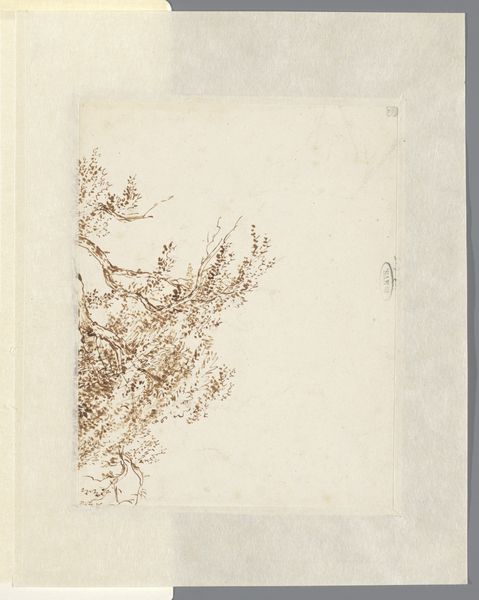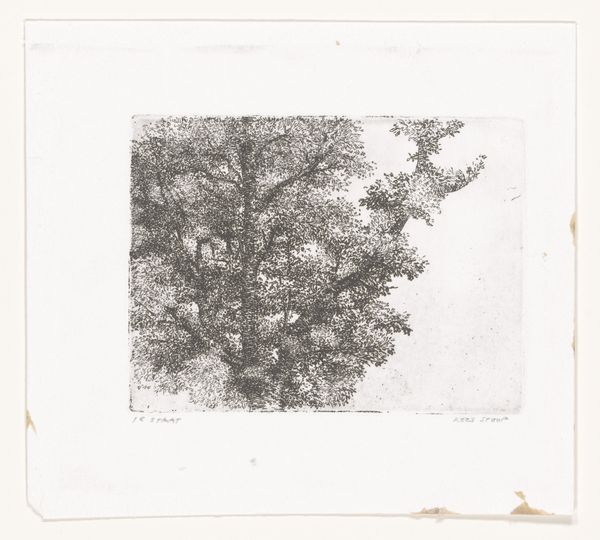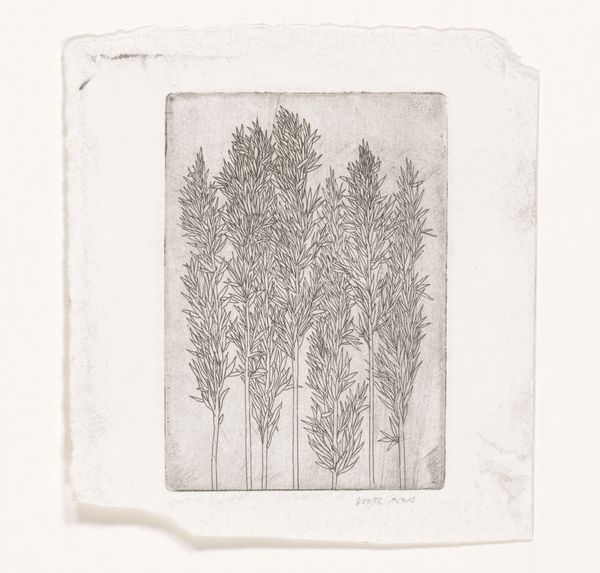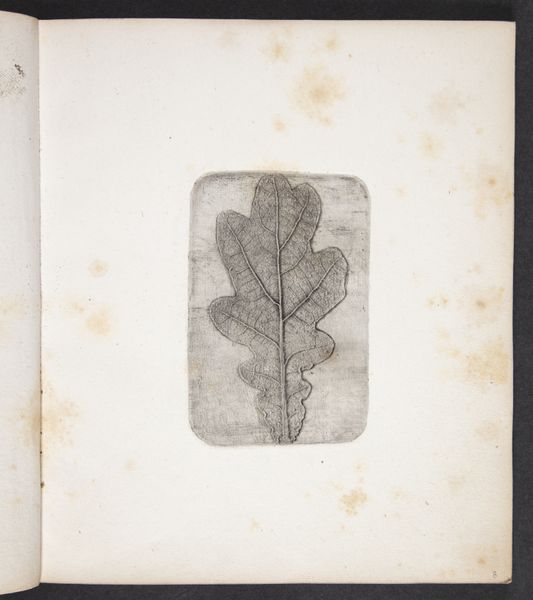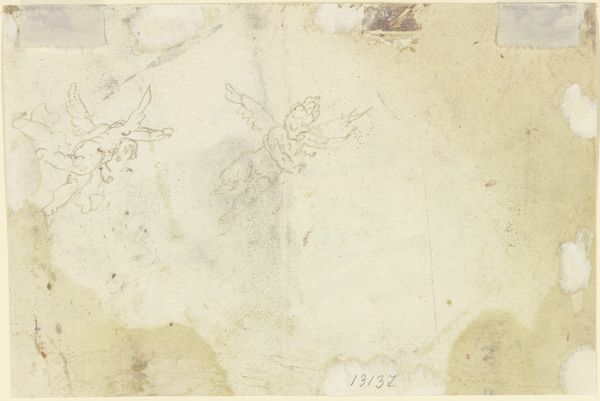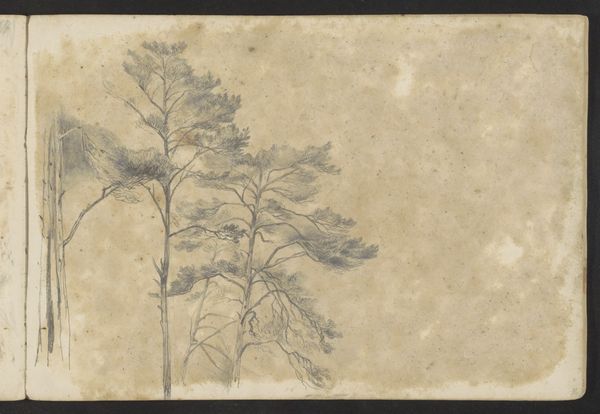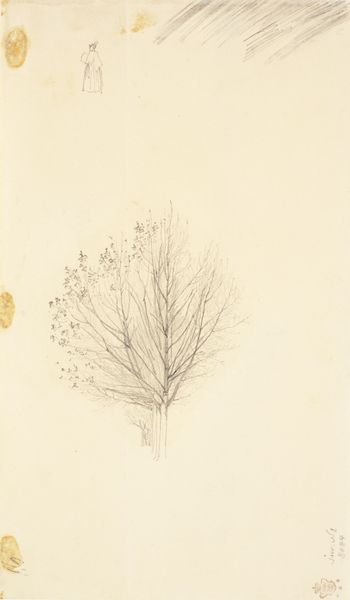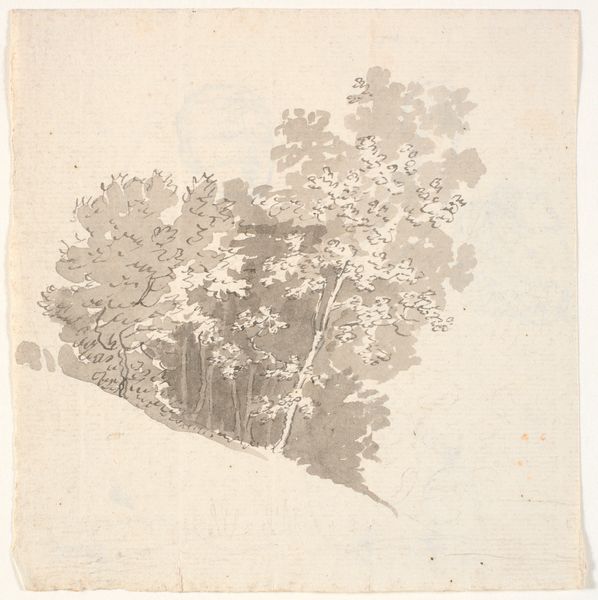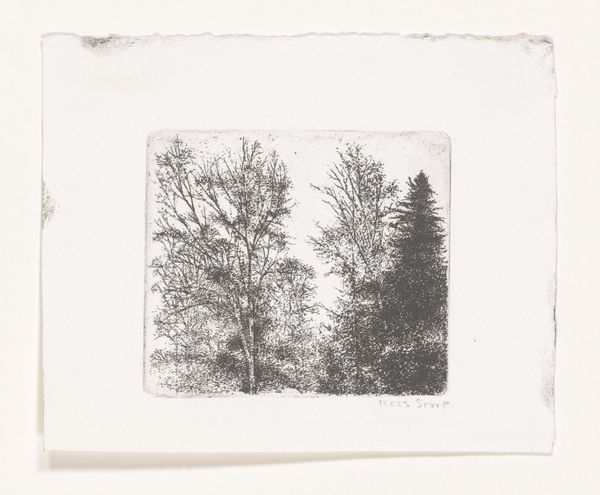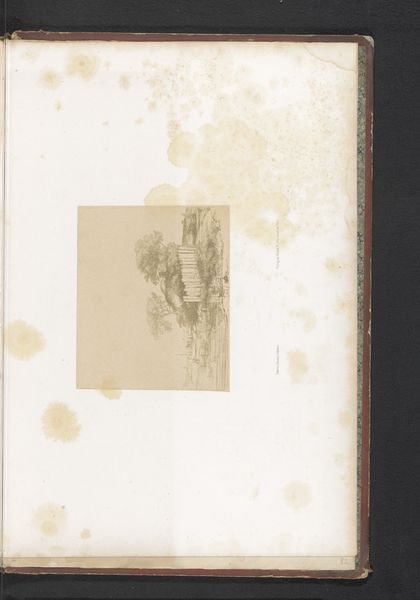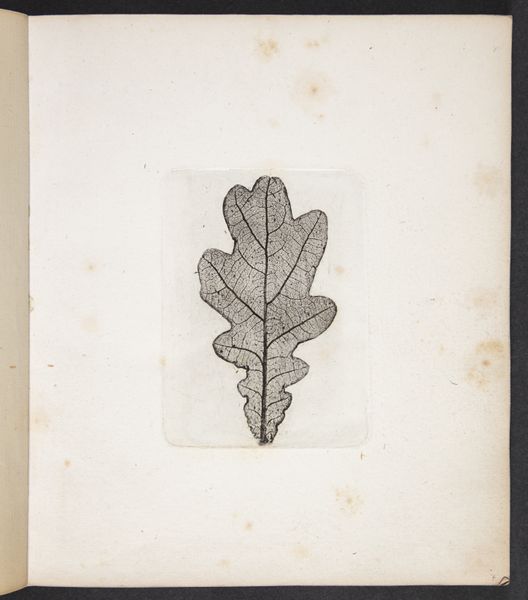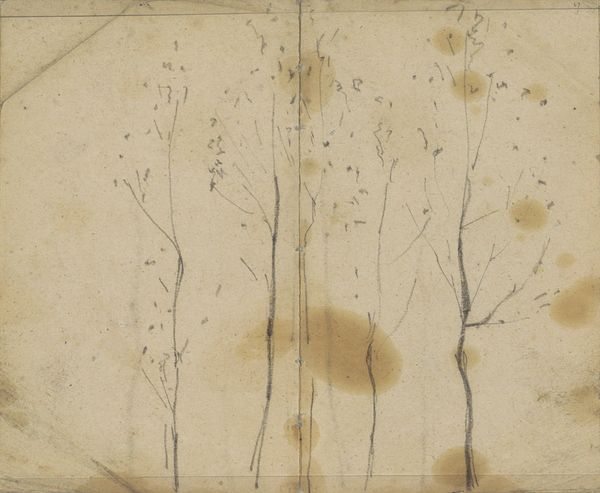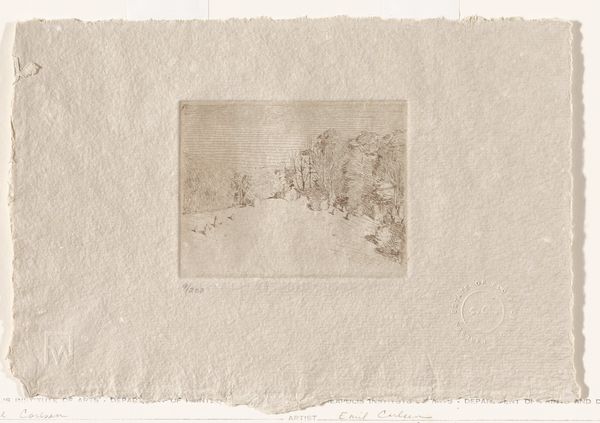
drawing, print, etching, paper
#
drawing
# print
#
etching
#
landscape
#
etching
#
paper
#
line
Dimensions: 4 7/8 x 5 7/8 in. (12.38 x 14.92 cm) (plate)7 1/2 x 11 in. (19.05 x 27.94 cm) (sheet)
Copyright: Public Domain
Curator: This is Emil Carlsen's "Tree Study," an etching from the 19th century currently held at the Minneapolis Institute of Art. Editor: There's a meditative quality to it. The muted tones and fine lines evoke a sense of stillness, a captured moment of observation. Curator: I agree, the line work, in particular, displays Carlsen’s interest in rendering the form with precision and elegance, a key element of formal analysis. Consider how the tree is centered, anchoring the composition within the space. Editor: Yet the material processes behind such a seemingly quiet scene invite consideration. The choice of etching itself – requiring careful work with acid and metal – contrasts beautifully with the organic subject matter. Look at the edges of the paper, their rough-hewn nature suggests a hand-made approach from start to finish, challenging ideas about high art. Curator: True, the contrast in textures creates a compelling visual interplay. Focusing on the internal structure though, note the way the branches reach and divide, creating visual pathways for the eye. Each carefully rendered stroke adds to the overall complexity, a symphony of line. Editor: Speaking of strokes, etching as a process allows for multiple identical images; yet each print retains a uniqueness through the variation of the artist's hand. Was Carlsen seeking to industrialize landscape, to see nature reflected in a market exchange? Curator: While your concern about production is well-placed, I would argue that Carlsen’s primary focus lies in capturing a subjective encounter with the landscape. The simplified, distilled nature of the etching serves not to commodify, but to refine the raw experience. Editor: Maybe it attempts refinement, yet the medium retains inherent material and societal connotations about reproducibility, craft and labor. Curator: In viewing this piece, I am struck by how the artist distilled the essential structure of a tree. Editor: And I'm compelled to think about how an appreciation of landscapes connects intrinsically to the historical treatment of both nature and manual labor.
Comments
No comments
Be the first to comment and join the conversation on the ultimate creative platform.

